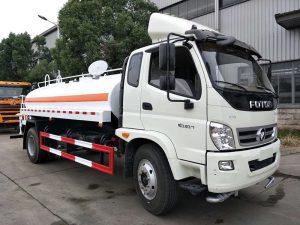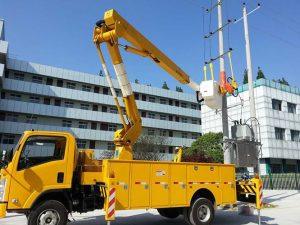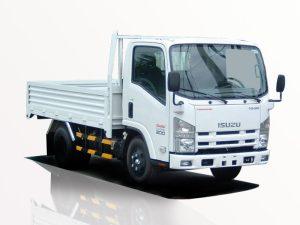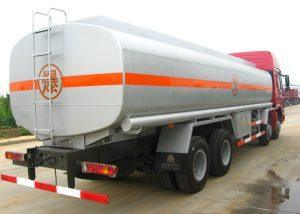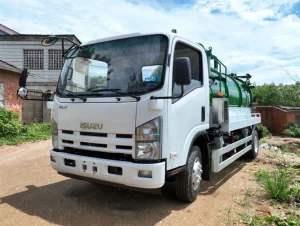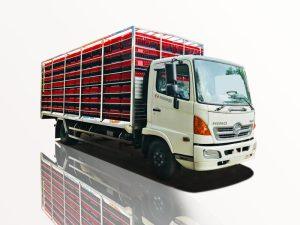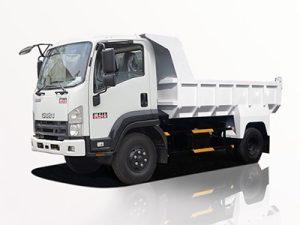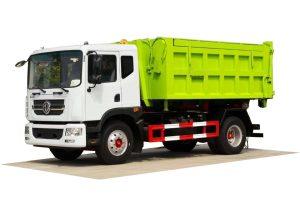Monday to Saturday - 8:00 -17:30
All You Need to Know About Claw Garbage Trucks
In the world of waste management, efficiency and functionality are key components that ensure urban cleanliness and sustainability. One of the prominent vehicles in this sector is the claw garbage truck. With their specialized designs and capabilities, these trucks play a crucial role in picking up bulky waste items that standard garbage trucks often cannot handle. This article dives deep into the various aspects of claw garbage trucks, exploring their features, types, and importance in our daily lives.
What is a Claw Garbage Truck?
A claw garbage truck, also known as a grapple truck, is a specialized vehicle equipped with an articulating arm and claw mechanism. This design allows for the efficient collection of large, heavy, or bulky waste items such as furniture, appliances, and construction debris. Instead of relying on manual labor for these tasks, the claw garbage truck uses hydraulic systems to lift and transport waste, making waste management operations more efficient and safe.
How Does a Claw Garbage Truck Work?
Hydraulic System Mechanics
The functioning of a claw garbage truck primarily revolves around its hydraulic systems. Here’s a breakdown of how they work:
- Power Source: The hydraulic system is powered by the truck’s engine, which generates pressure to operate the hydraulic cylinders.
- Claw Movement: The hydraulic cylinders control the opening and closing of the claw. Operators can precisely control the position of the claw to pick up various types of waste efficiently.
- Load Capacity: Most claw garbage trucks are designed to handle loads ranging from 10,000 to 20,000 pounds, depending on the model and design.
Operational Process
The operation of a claw garbage truck involves several steps:
- Approach: The truck approaches the waste location.
- Claw Positioning: The operator positions the claw over the debris.
- Claw Activation: The operator activates the hydraulic system to close the claw around the item.
- Lifting: The crane lifts the item onto the truck bed.
- Transportation: The truck transports the waste to a designated landfill or recycling center.
Types of Claw Garbage Trucks
Standard Claw Trucks
These trucks feature a single, straightforward claw mechanism that is efficient for residential and small commercial waste collection. They are highly versatile and often used by municipalities for regular clean-up operations.
Multi-Claw Trucks
Equipped with multiple claws, these trucks can handle more than one item at a time, increasing efficiency. Multi-claw trucks are often employed in commercial or construction settings where higher volumes of waste are generated.
Heavy-Duty Claw Trucks
Heavy-duty claw garbage trucks are designed to tackle the most substantial waste items, such as old machinery and large furniture. They often have enhanced lifting capabilities and stronger hydraulic systems to manage heavier loads.
Benefits of Using Claw Garbage Trucks
Efficiency in Waste Management
Claw garbage trucks significantly reduce the time taken to collect large items compared to traditional methods that rely on manual lifting. This efficiency leads to quicker city clean-ups and enhances overall waste management operations.
Safety Improvements
Using a claw truck minimizes the risk of injuries associated with manual lifting. The hydraulic claws reduce physical strain on workers and help prevent accidents caused by heavy lifting, thereby enhancing workplace safety.
Environmental Impact
By facilitating the collection of large waste items, claw garbage trucks help prevent illegal dumping and keep public spaces clean. Moreover, many municipalities emphasize recycling programs that enable claw trucks to transport recyclable material to appropriate facilities, positively influencing environmental sustainability.
Practical Examples of Claw Garbage Truck Uses
Residential Clean-Up Initiatives
During seasonal clean-up drives, claw garbage trucks are deployed to pick up yard waste, bulk trash, and discarded items from homes. For example, communities in spring often conduct bulk trash days where residents can leave large items at the curb for claw trucks to pick up.
Construction and Demolition Sites
Construction sites generate large volumes of waste, including concrete and out-of-service equipment. Claw trucks are commonly used on these sites to collect debris quickly and efficiently, allowing for smooth workflow without unnecessary delays.
Disaster Relief Operations
In the aftermath of natural disasters, such as hurricanes or floods, claw garbage trucks play a pivotal role in clearing out debris. The speed and efficiency of these vehicles make it easier for communities to recover and rebuild in a timely manner.
Maintenance Tips for Claw Garbage Trucks
Regular Hydraulics Inspection
Routine checks on the hydraulic system are essential to ensure the claw operates smoothly. Operators should regularly inspect for leaks, ensure fluid levels are adequate, and verify that all hydraulic connections are secure.
Routine Tire Checks
The weight and size of claw garbage trucks require robust tires. Regularly inspecting tire pressure and tread can significantly impact safety and fuel efficiency during operations.
Engine Maintenance
Like all vehicles, claw garbage trucks require consistent engine maintenance. Scheduled oil changes, filter replacements, and overall inspections can prolong the life of the truck and maximize performance.
Regulatory Considerations and Compliance
Local Waste Management Regulations
Claw garbage trucks must comply with local waste management laws and regulations. Municipalities often have specific requirements regarding the types of waste that can be collected and how it should be disposed of.
Safety Standards and Training
Operators of claw garbage trucks typically undergo training to understand the machinery and safety protocols. Compliance with Occupational Safety and Health Administration (OSHA) regulations is critical to ensure the safety of operators and the public.
Innovations in Claw Garbage Truck Technology
Automation and Smart Features
Recent advancements have introduced automation in claw garbage trucks. Features like GPS tracking, real-time monitoring, and automated systems increase efficiency and make operations more precise.
Hybrid and Electric Models
With growing environmental awareness, some manufacturers are developing hybrid and electric claw garbage trucks. These models aim to reduce emissions and lower fuel costs, aligning with sustainability goals in waste management.
Frequently Asked Questions (FAQs)
1. What types of waste can claw garbage trucks pick up?
Claw garbage trucks are designed to collect bulky waste, such as furniture, appliances, yard debris, and construction rubble.
2. How often do claw garbage trucks operate?
The frequency of claw garbage truck operations varies by municipality but often includes scheduled bulk waste collection days or as needed for specific events like community clean-ups.
3. Are claw garbage trucks environmentally friendly?
Yes, they can be environmentally friendly. Many claw garbage trucks are utilized in recycling programs, helping divert waste from landfills and encouraging sustainable disposal practices.
4. How do claw garbage trucks benefit communities?
Claw garbage trucks help keep communities clean by efficiently removing large waste items, preventing illegal dumping, and facilitating timely clean-up efforts after events or disasters.
5. What safety measures should operators take when using claw garbage trucks?
Operators should wear appropriate safety gear, conduct pre-trip inspections, follow safety protocols, and undergo training to ensure safe operations.
6. How can municipalities improve claw garbage truck services?
Municipalities can enhance claw garbage truck services by increasing public awareness of collection schedules, adopting newer technologies, and ensuring regular maintenance of the vehicles for optimal performance.


